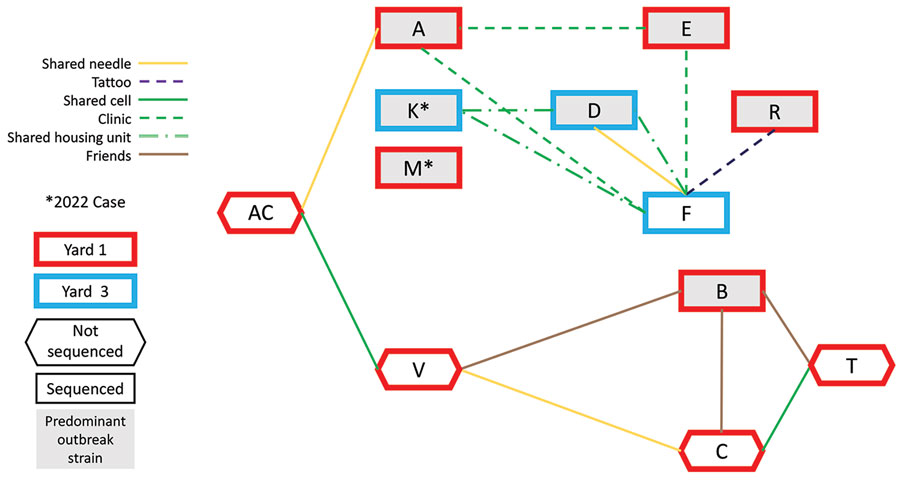Volume 30, Supplement—March 2024
SUPPLEMENT ISSUE
Outbreaks and Investigations
Outbreak of Invasive Serratia marcescens among Persons Incarcerated in a State Prison, California, USA, March 2020–December 2022
Figure 2

Figure 2. Social network analysis of patients and whole genome sequencing results for patients hospitalized with invasive Serratia marcescens infections at prison A, California, USA, January 2020–March 2023. All patients were identified in 2021, except patients K and M, identified in 2022. Patients A, B, D, E, R, K, and M all had isolates in the predominant outbreak strain. Patients D, F, and K were in yard 3, all others in yard 1. Patients C, T, and V did not have isolates available for sequencing. Patient AC had a S. marcescens infection in 2019 outside of the outbreak period; however, he had multiple social connections with case-patients and so is included in this figure. Patient F shared a housing unit with D and K, was in the clinic at the same time as A and E, reported sharing needles with D, and might have been tattooed by R. Patient D also shared a housing unit with K. Patient A was in the clinic the same time as E and reported sharing a needle with AC. Patient V shared a cell with AC, was friends with D, and reported sharing needles with C. Patient T shared a cell with C and was friends with B. Patients B and C were also friends.